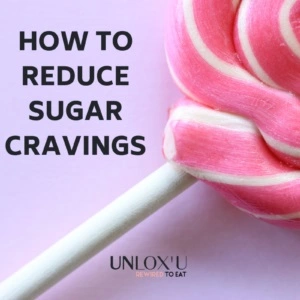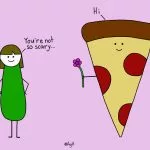Feeding our feelings, drinking our emotions, or “emotional eating/drinking” is a common affair in our day and age. As I’ve recently gone through a breakup from my long-term partner myself, this topic is more relevant to me than ever before. During the first few days after the breakup, I gave myself some healing time and as part of it, I watched a few chick flicks and rom-com movies. There was a common topic I noticed: Eating a tub of ice cream when feeling heartbroken or getting drunk when there is a disappointment.
It’s like our society normalizes eating for comfort in difficult moments. I need to add that I don’t think it’s wrong to eat ice cream when we are sad, but I do think we should know that there are other ways to manage our emotional pain or discomfort. So, it is not a surprise that we are lured to the chocolate cake or jar of Nutella when we are feeling sad, stressed or rejected. Compounding this situation is that we have become a culture of absent-minded eaters. The norm is scrolling Instagram, running around after the kids whilst simultaneously shoving food in our mouth mindlessly. We are more connected than ever via social media, but loneliness is at a peak!
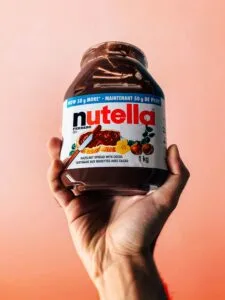
Chemical of Reward
When we eat fatty or sugar-rich foods, the feel good neurotransmitter (dopamine) is created. This is also why they are labeled ‘comfort foods’. Dopamine is referred to as the ‘chemical of reward’, essentially a hit to the brain so we feel good when we achieve something. So, if we eat these types of foods when we are sad or upset, we cover this feeling temporarily with a good feeling. This numbs the discomfort of painful emotions for a short while.
Unfortunately, eating this way or emotional eating does not get to the underlying issues. So we merely continue the cycle of emotion, cravings, binge, overeat, restrict; repeat.
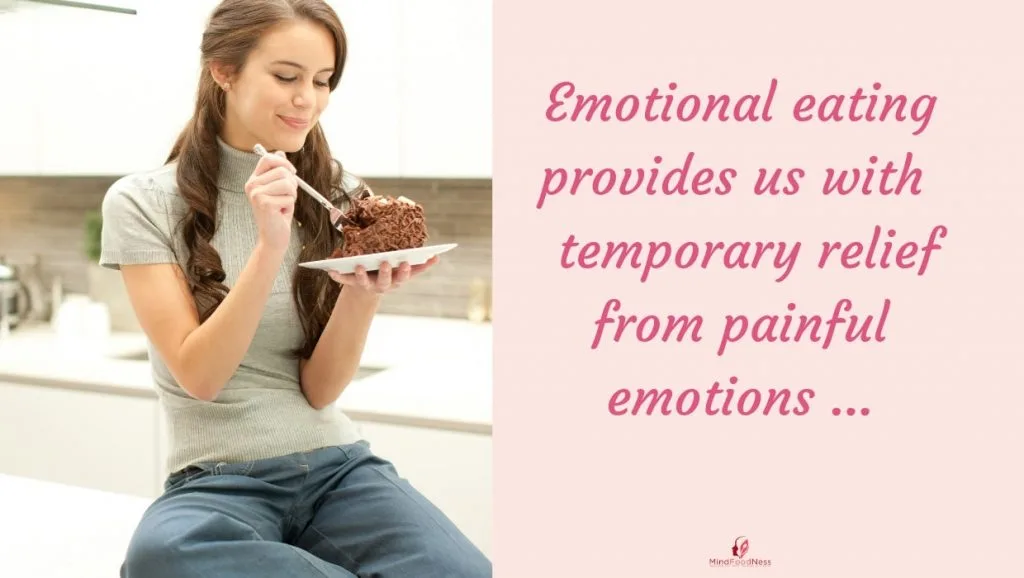
What We Truly Crave
Many people come to me who have tried every diet under the sun, and nothing has worked. For me, I used to believe when I had the perfect body I would be happy. When the world was crumbling around me, I could find comfort in controlling my food. But what I was truly craving was much deeper. It was was love, purpose, and joy. Many people also use food to distract themselves from feelings of anxiety, guilt, fear or anger.
I want to help people to recognise what they are truly needing when the cravings for hot chips or chocolate biscuits kick in.
4 Ways to Stop Feeding Your Feelings
Allow and Identify the Emotions
It is ok to feel sad. It is ok to feel ‘negative emotions’. This is something many of us did not feel safe to do in childhood or might have been distracted if we did. In this way, emotions are healthy expressions of our truth. We don’t want to cover the emotional feelings and repress them. Tune into your body and walk into your feelings bravely, with kindness and compassion. If you allow the tension and feeling to release in its natural way, you won’t need to eat to relieve the pressure with food.
Feeling is healing
To get through it is to get into it. Like into the eye of the hurricane. This is where we need to sit and feel to be able to heal. The emotional pain after the break up was truly horrible. At times, I felt like someone kicked me in the gut and stuck a knife into my heart at the same time. At times, I wanted to run away from those strong feelings, I wanted to distract and I also had fantasies about how I could numb them. But I always knew that I would only be delaying the process of healing, so I gave my self all the time I needed to feel the pain, knowing that it will pass. So, I trusted.
Body Scans
Mindful eating is about ‘tuning in’ to your body about what it needs. Is it food or is it an emotional need? Body scans are awesome for this. Take a breath, close your eyes and scan your body; do you feel the tension? where can you feel your emotions? What are those feelings telling you? What thoughts and feelings are coming up? By the time you have done this, you will know better how to meet your actual needs, instead of going on auto-pilot and feed your feelings. This process also helps with checking in with our physical, emotional and mental state, needs and desires.

So, once we allow the emotion, we can decide if we need to take action or allow the emotion to be processed. For instance, if we feel lonely we can take action to call a friend. If we feel grief, we can allow the crying and feeling to move through our body as part of our healing – or reach out for support.
Food for the Soul
Think of other ways to self-comfort instead of the jar of Nutella. For instance, you might:
- take a walk
- write in your journal
- play some music
- read a book
- call a friend
- take a yoga class (For my free yoga classes online, click here)
- go for a run
Try learning something new. Fill your schedule with exciting and joyful activities. If you do feel grief, look for help or seek support to guide you through this. If you feel lonely, think of ways to build more connections in your life. Pack your fridge with delicious hearty food so you don’t feel deprived. We want a healthy and balanced relationship with food – without restrictions which ultimately gives food all the power.
JOY
Finding joy is paramount in this process. Joy is profoundly different from happiness and is tied to mind and body connection. Happiness is transitory and tied to external experiences or ‘things’, whereas joy is not. What activities bring you joy? Do these – because you will find the need for feeding your feelings will reduce!
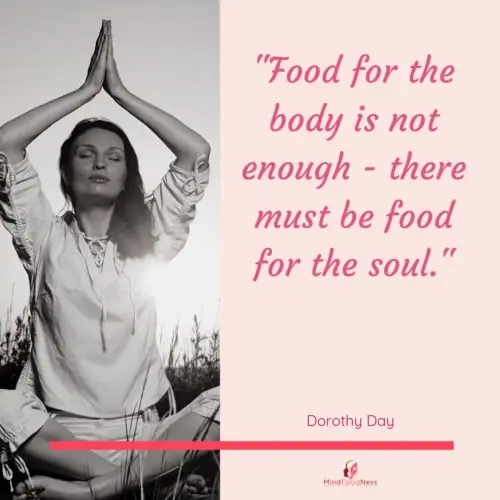
Feeding our feelings is a temporary band-aid of pleasure or numbing, that eventually dissipates. Awareness is key here. Awareness to become empowered to make different choices. When we shift the focus from “What” we eat, to “Why” we eat, we ultimately make peace with food and ourselves. We can then quit feeding our feelings and begin to eat more intuitively.

